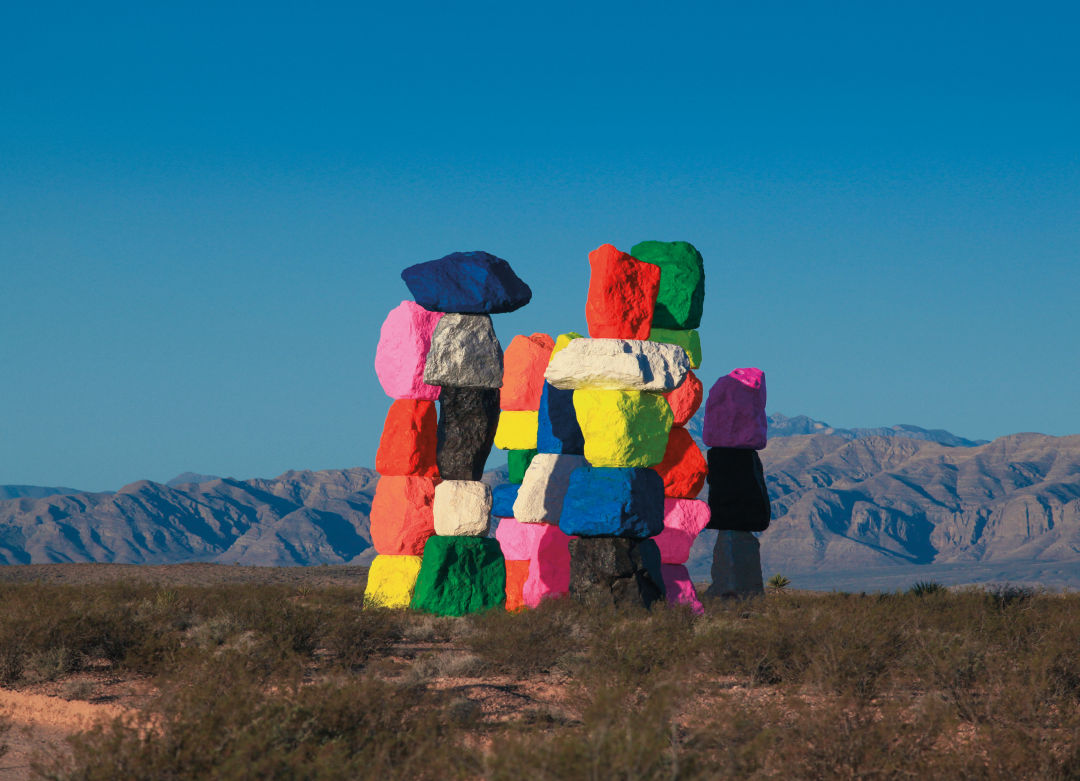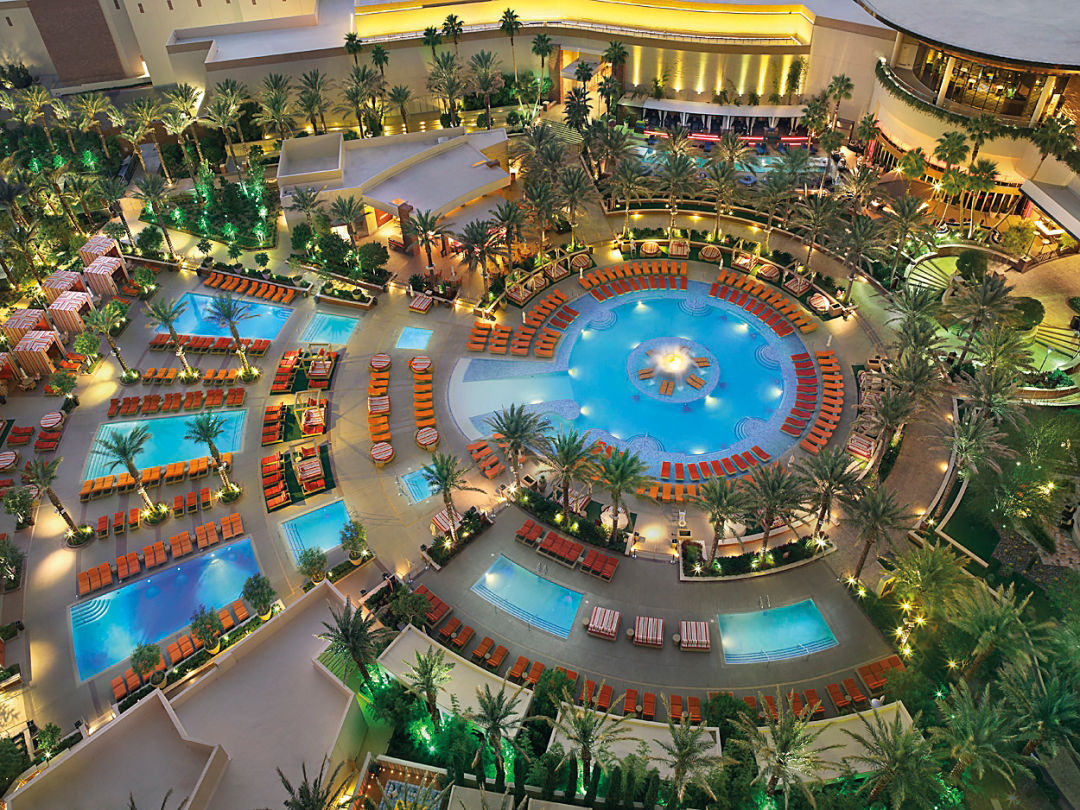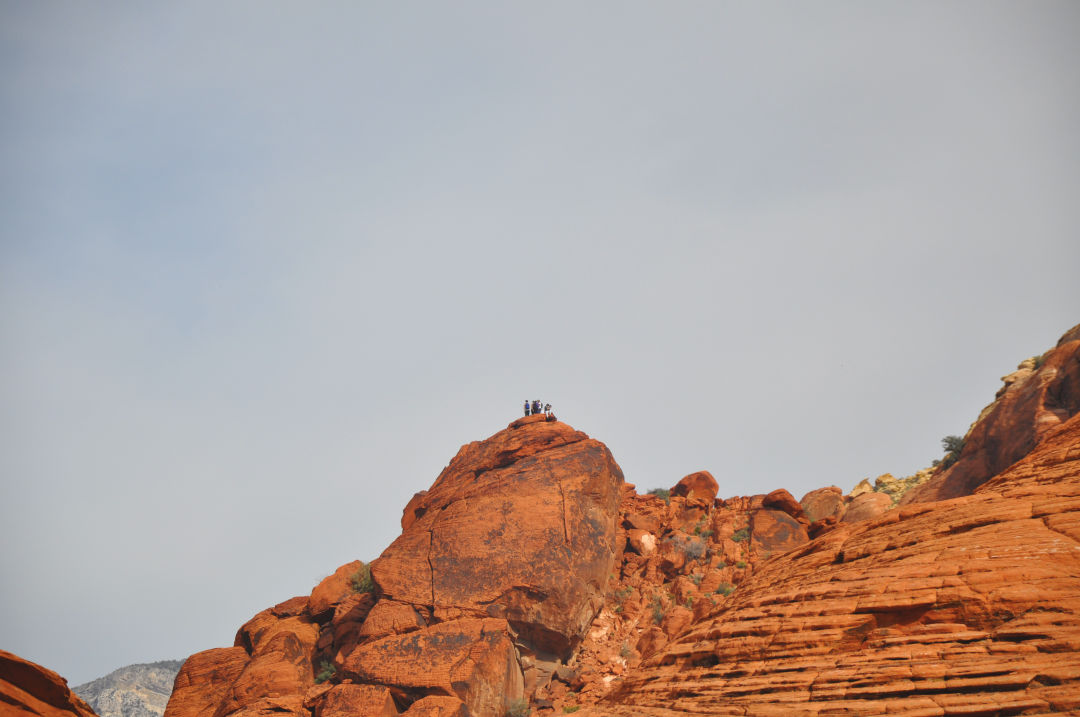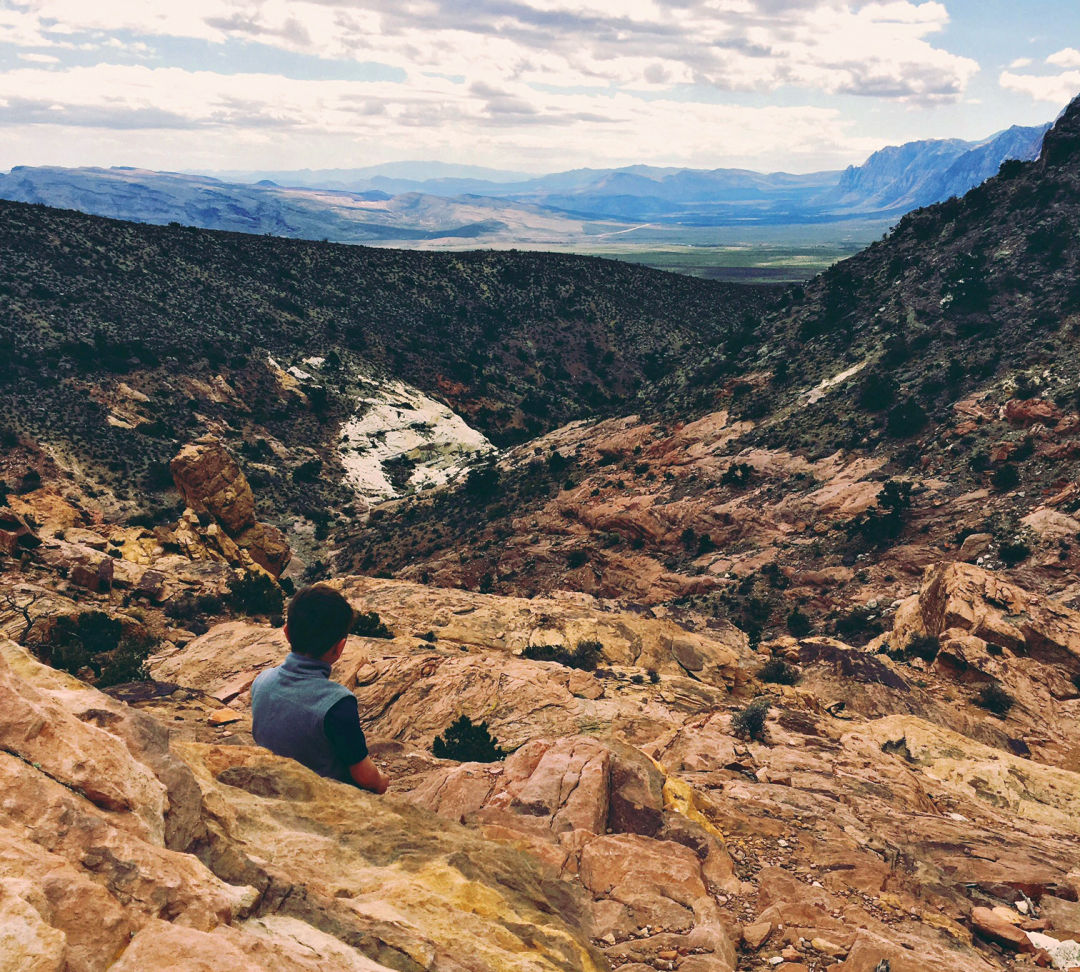Discover Nevada’s True Gold: Wild Land Art and Family-Friendly Outdoor Adventures

A different kind of neon 10 miles south of Vegas; each rock in Swiss land artist Ugo Rondinone’s series of painted limestone pillars weighs about 20 tons.
Editor's Note: This story was written, edited, and prepared for publication before the October 1 mass shooting in Las Vegas.
"Vegas?” I didn’t want to go to Las Vegas. As spring break approached this past year, after a grinding Portland winter of slick pavement, dark skies, and tried souls, I wanted to go to Palm Springs. I wanted to go to Todos Santos, or, like, Portugal: somewhere cool. Marrakesh? The Basque country? Las Vegas did not qualify in my eyes.
And yet, with two small kids and just a handful of days off, my wife and I needed something frictionless. Las Vegas beckoned with multiple brief, direct flights daily out of PDX. Fares—subsidized, in my puritanical Left Coast worldview, by gambling and sin—looked doable. (This fall, adult round-trip tickets to LAS in March went for as little as $180.) And lodging options, ample.
“Vegas,” my wife noted, “could be easy.”
Edge of the Desert
We opted for Red Rock Casino Resort & Spa, in the sandstone-and-rose-colored off-world colony of Summerlin, about 10 miles west of the heart of Vegas. This affluent suburb (a “master-planned community”) sits where the Vegas metro area chews at the Mojave. The hotel quotes late winter/spring rates of about $250 for one of its 800 rooms; I can report that ours was vast, immaculate, and commanded a view of both the palm-lined pool complex and hypnotic, multicolored desert crags just beyond.
I was starting to come around.

Beat that dry heat at the Red Rock Casino Resort & Spa, where outdoor pool options range from cool to steamy.
Image: Courtesy Station Casinos
It helped that Red Rock, opened in 2006, was conceived—as Lori Nelson, spokeswoman for parent company Station Casinos, would tell me months later—as a place apart. Yes, there’s a massive casino. Yes, a staggering crystal chandelier hangs over the lobby bar. And yet, it still feels decidedly unlike the Strip, with plenty of quieter spots and a reigning family-friendly, low-key vibe. As Nelson says, “We’re for the discriminating Vegas visitor who’s sort of been there, done that.”
The casino compound includes an array of dining options, from manly chophouse T-Bones to a mediocre food court. Within walking distance, a sprawling outdoor mini-city called Downtown Summerlin offers plentiful fast-casual, A-OK for our unadventurous kids and adequate to adult caloric and alcoholic needs. Hungry for, say, David Chang’s Momofuku outpost, or even a more “normcore” foodie experience that the likes of Chang would endorse? Head back to the Strip, or elsewhere in this under-recognized global city. We stuck to Summerlin and our #goals.

Summit views at Red Rock Canyon National Conservation Area
Image: Courtesy Travel Nevada
Trails Beyond
The hiking: that’s why we’re here. Red Rock Canyon National Conservation Area, a 10-minute drive from the eponymous casino, packs in endless desert adventure: at least 26 trails, from two-mile gimmes to formidable Turtlehead Peak. From here, a 13-mile, one-way scenic drive loops through the Keystone Thrust’s sandstone netherworld: fault-split, multicolored layers that render geological time visible. (Hike from the loop’s White Rock trailhead for a dramatic introduction to plate tectonics.)
The conservation area’s 2,000-some recognized climbing routes and the loop’s appeal to cyclists make this multimodal playground especially popular (and crowded) from Thanksgiving through spring break season. Consider instead curling southwest from Vegas on Highway 159 to other nearby stretches of desert splendor, from the three-mile First Creek Trail’s “hidden” waterfall to Spring Mountain Ranch State Park, a former Howard Hughes retreat rich in short, rewarding hikes. Reinforce that sense of awe with day-trip drives to the petroglyphs and petrified trees of Valley of Fire State Park or even the man-made monumentalism of Hoover Dam.

Contemplating the Keystone Thrust Trail
Image: Zach Dundas
Nature as Canvas
Awe is found, too, in the Southwest’s distinctive tradition of land art, which in its ’60s-and-’70s nascence often consisted of burly thinkers doing renegade things in (and to) the desert: constructing massive spirals, erecting enormous cylinders and spires, that sort of thing.*
Through spring 2018, behold the evolution of this tradition at a swatch of scrub land 10 miles south of the city limits. Swiss artist Ugo Rondinone’s Seven Magic Mountains are pillars of wildly painted limestone hunks—each precision-cut with an Italian diamond saw, each weighing at least 40,000 pounds—that rise from the desert like a joke, a game, and a shrine rolled into one. “It’s very poetic,” says David Walker, director of the Nevada Museum of Art, which is sponsoring the work. “There are many interesting thoughts behind it—about Las Vegas as a city and the desert environment—but it’s also an almost childlike gesture. And people are responding.”
I was skeptical. Before we got there. But when we made it to Seven Magic Mountains, the towering work’s balance of fun, ferocity, and sheer, improbable singularity felt like the summation of an alternative Vegas. Step beyond the neon into natural light, and the weirdness remains, just better: the kind of glow that dazzles the whole clan.
*One endeavor, ongoing since 1972, is artist Michael Heizer’s secretive City series of huge sculptural complexes at a remote—and, sadly, currently private—Nevada location. (You can visit Heizer’s Double Negative, a pair of trenches carved into a mesa about 80 miles from Vegas.)




